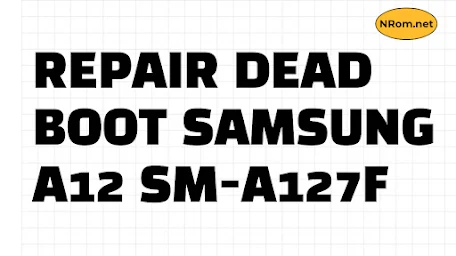To repair a dead boot issue on a Samsung A12 (A127F) using the Test Point Method with Chimera Tool, you'll need to follow a set of detailed steps. This method is usually employed when the phone does not respond to standard boot or recovery mode and requires low-level intervention. The test point process involves accessing the phone’s internal components to force it into a state that allows firmware flashing or repair.
Important Notes:
- Risk: The test point method can be risky and may void your warranty.
- Data Loss: This procedure may cause data loss, so it is advised to back up data if possible.
- Skill Level: This method requires some level of technical expertise, as it involves working with the phone’s internals.
- Tools Needed: You will need the Chimera Tool, the appropriate cables, and the test point schematic for the Samsung A12 (A127F).
Prerequisites:
- Chimera Tool: Make sure you have the latest version installed on your computer.
- Samsung A12 (A127F): The device must be completely powered off.
- Test Point Schematic: You need to locate the test point for the Samsung A12 (A127F). This schematic can be found in service manuals or online forums specializing in Samsung devices.
- USB Cable: A working USB cable to connect your phone to the PC.
- Samsung USB Drivers: Ensure the necessary drivers are installed on your PC for the Samsung device from Here.
- Tools: Small tools for opening the phone (e.g., tweezers, prying tools), and a multimeter (optional) to verify the test point connection.
Step-by-Step Procedure:
Step 1: Preparation
- Install Chimera Tool: Ensure you have the latest version of Chimera Tool installed on your computer from Here.
- Download Test Point Schematic: Look for the test point schematic for the Samsung A12 (A127F). You can typically Here.
- Download Firmware : Download latest version or the Samsung A12 (A127F) Here.
- Download SamTool : Download latest version Here.
Step 2: Open the Phone
- Disassemble the Phone: Carefully open the back cover or the necessary part of the phone to access the internal components.
- Use prying tools or a heat gun to soften the adhesive and safely remove the back cover.
- Take care not to damage the internal parts, including the battery, motherboard, and other components.
- Locate the Test Point:
- Locate the specific test point on the motherboard (this will require you to look at the schematic or repair guide for the A12 A127F).
- Use a multimeter to verify the test point's location if you're unsure.
Step 3: Connecting the Test Point
Connect the Test Point:
- Use a tweezer or another small conductive tool to short the test point. The test point typically helps the device enter a mode that allows the firmware to be flashed.
- Be cautious while performing this step as you’re directly interacting with the internal components.
Connect the Device to the PC:
- While holding the test point, connect your Samsung A12 to the computer using the USB cable.
- You may need to hold the test point for a few seconds or until you hear a connection sound from your PC or see the device being recognized in Chimera Tool.
Step 4: Launch Chimera Tool
- Open Chimera Tool on your computer.
- Detect the Device: Chimera Tool should now detect your Samsung A12 in the correct mode for flashing or repair. If the device is not detected, ensure that the test point is connected properly and that the device is in the right mode.
Step 5: Dead Boot Repair
Choose the Repair Option: In Chimera Tool, navigate to the “Repair Boot” option or similar repair options that address boot issues.
- Click on “Select BL file”, and browse to the folder where your BL file (Bootloader file) for Samsung A12 (A127F) is stored.
- The BL file should be part of the official full firmware package for your device.
- Follow the on-screen instructions in Chimera Tool to begin the repair process.
- If successful, Chimera will either flash the bootloader or repair the system partition to allow the phone to boot again to download mode.
- Flash the full firmware package for your Samsung A12 (A127F) with SAMTOOL
Wait for the Process to Complete:
- The tool will start the flashing process. This may take several minutes, so ensure the phone remains connected throughout.
- Do not interrupt the process or disconnect the phone from the computer.
Step 6: Reboot the Device
- Completion: Once Chimera Tool finishes the process, the phone should automatically reboot or prompt you to do so.
- Check the Device: After the reboot, check if the phone successfully boots into the system. If it works, the dead boot repair was successful.
Step 7: Finalizing
- Reassemble the Phone: Carefully reassemble the phone and secure the back cover.
- Test the Functionality: Test the device to ensure that the repair was successful and that everything is functioning correctly.
Additional Troubleshooting:
- If the phone does not boot after following these steps, you may need to reattempt the process or check the connections.
- Sometimes, a full firmware flash or different repair options within Chimera Tool may be necessary if the dead boot issue persists.
Conclusion:
Repairing a dead boot using the test point method with Chimera Tool can be effective if done correctly. This procedure requires careful attention to the internal components and may involve some trial and error. If you're not comfortable with handling internal components or working with test points, consider seeking assistance from a professional technician.

